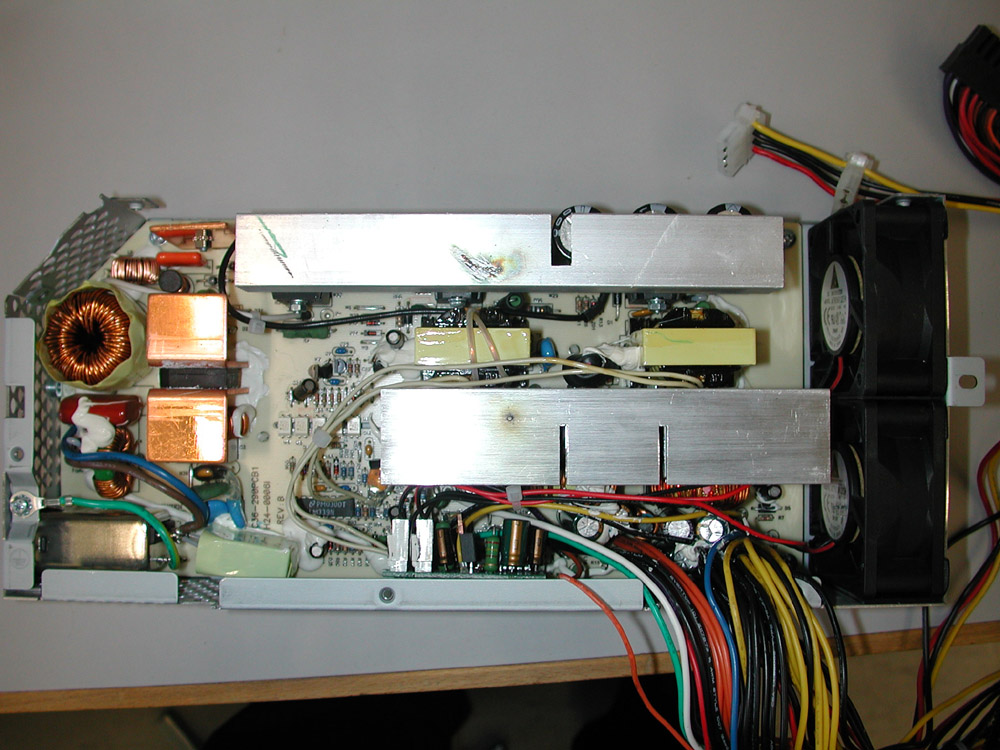
I decided to use cable ties, as they're strong enough to do the job, and easier than making brackets and using rivets or tapping threads in the case metal. If I need to salvage the ATX PSU at some point, it's only 4 wires to reconnect.Īnd the link where I got my inspiration from:īased on the Twilight in Efeion blog linked above, and from my own test fitting, a regular ATX PSU will not fit in the case anywhere except above the optical drives. I didn't have a female connector for that, so I relented and cut the ATX supply wires and used some spare wire to make an extension that would keep those 4 wires the same total length as those going through the ATX connectors. The only issue I had here was the 4-pin extension. There are more 3.3V and 12V lines on the MDD PSU than are provided by the ATX PSU, so I've attached two MDD wires to one ATX wire in a couple of spots. After double-checking the wiring here and here, it's down to connecting the right colours together. The PSU will be mounted above the optical drives.which is as far as I can tell the only place a regular size ATX PSU will fit in that case. I picked up a 500W Cooler Master PSU that has a nice 120mm fan and an open grill at the back that should allow for good ventilation inside the case. It's nicer looking than my old stand-by, black tape, and makes a stronger connection. I used heat-shrink tubing to cover the solder joints. The wiring loom has been cut from the old power supply, and is ready for soldering. I'd considered cutting the ATX connector off the new PSU and soldering wire to loom from the MDD PSU, but thought this would be a bit cleaner and gives me the option of salvaging the new PSU if something goes wrong. This is the ATX extension I'll be using for the connector. There's nothing visibly wrong that might have been an easy fix, and the PSU is pretty densely packed and has a lot of silicon caulk applied to keep components from shifting. Tried replacing it, but the new fuse blew as soon as it was connected to the mains. When I opened it up, I found the fuse was blown. (thumbnails are clickable for larger image) There isn't too much out there on mirror-door to ATX conversions, despite their flaky power supplies, so if there's some interest, I'll snap some photos while I'm doing the wiring and installing.įrom what limited info I've found on the MDD conversion, the 28V is only necessary if you're going to use the ADC conector, and probably firewire. I picked up a better PSU, with a rating closer to that of the original, and wanted to know if there was any interest in having the process documented.

I didn’t want to ruin the power supply if the experiment was unsuccessful, so rather than snipping any wires, I simply pulled the pins from the Molex connector to rearrange them.I've just picked up a mirror-door G4 for cheap, sold as a "won't power on" unit.Īfter a quick test, and it does power up with a re-wired ATX power supply.
#Atx power supply for mac g4 mdd pro#
I am not certain if the 400w power supply was simply a redundancy or if it’s necessary, but I know that using two hard drives, one DVD drive, and an ATI Radeon 9000 Pro graphics card, I never had an issue with the power draw. The first MDD G4 used a 400w power supply and the later models used 360w. I spent $45 on a standard 350w ATX power supply at Best Buy. If you don’t use an Apple Display with an ADC connector, then this is a non-issue and we can continue!īecause this was simply experimental, I wanted to keep a tight budget.

That one pin is the 25v supply for the Apple Display Connector. I realized that the molex connector on the motherboard was a standard 24-pin ATX! I also realized that a standard ATX power supply with 24 pins had all but one of the right leads! But was that one lead the crucial factor that would bury my plans? Considering you’re reading this post now, you can probably guess that no.no it wasn’t.


 0 kommentar(er)
0 kommentar(er)
